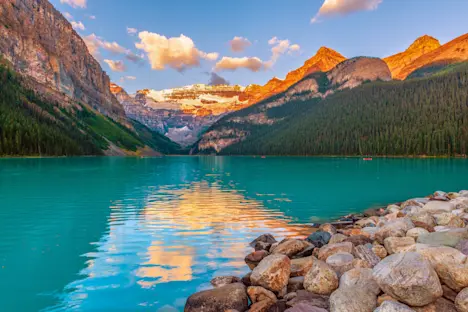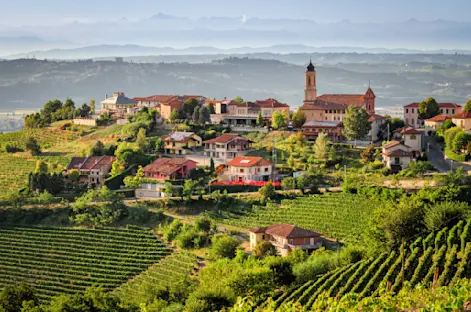Tuscany has always been a place where the senses intertwine—where art, architecture and cuisine meet in a harmony of light and flavor. This is the land of the Italian Renaissance, where palaces that once housed the Medici now brim with masterpieces, where piazzas bustle under the frescoed domes of exquisitely crafted churches. Yet for all its beauty, Tuscany is not only a feast for the eyes—it is, above all, a feast for the palate.
Across hilltops, silvery olive groves glisten under the sun. Vineyards spread in orderly rows down terraced slopes, punctuated by the dark spires of cypress trees. Here, good food is not just sustenance but a philosophy. Italians founded the Slow Food movement, dedicated to protecting regional traditions and local ingredients, and nowhere is that ethos more alive than in Tuscany.
The rhythm of the year dictates the flavors of the table: in spring, delicate vegetables like baby broad beans paired with young pecorino cheese; in summer, tomatoes bursting with sun-drenched sweetness; in autumn, chestnuts and porcini mushrooms gathered from the woods; and in winter, hearty soups of beans, kale and farro. Each season is marked by sagre—local weekend festivals devoted to a single dish or ingredient, celebrations of culinary heritage that almost always end with a communal feast.
Tuscany’s devotion to Slow Food and local festivals has deep roots. Long before the modern movement, Tuscans saw food as more than sustenance—it was a guide to living well. Renaissance thinkers embraced this philosophy, exploring how diet shaped clarity of thought and harmony with the universe. In his De Vita, Florentine philosopher Marsilio Ficino prescribed saffron, golden-hued wines and other bright foods to align body and spirit with the sun’s vitality. At the same time, monastic kitchens cultivated healing herbs and vegetables, preserving recipes that influenced early cookbooks such as Maestro Martino’s Libro de Arte Coquinaria, a cornerstone of Renaissance culinary thought. Leonardo da Vinci, too, carried this passion into his notebooks, sketching olive presses, kitchen devices and even recipes for rosewater lemonade. Centuries later, actor Stanley Tucci’s Searching for Italy would remind the world of what Tuscans have always known—that food is inseparable from place, season and identity. On our new Tuscany: La Dolce Vita journey, you’ll experience this timeless philosophy firsthand, savoring the flavors, traditions and landscapes that have defined Tuscan life for centuries.

Spring: Fresh Flavors in Bloom
As winter loosens its grip, Tuscany awakens in a burst of green. Market stalls brim with tender artichokes, sweet peas and wild herbs gathered from meadows and woodland edges. The first fava beans arrive, their bright earthiness the perfect partner to young pecorino Toscano, a cheese prized worldwide for its rich, nutty flavor. Drizzled with olive oil and paired with rustic bread, it is spring distilled on a plate.
Easter traditions bring special treats. The torta coi pizzi, nicknamed the lace pie for its intricately crimped crust, is filled with rice, chard, ricotta and two kinds of cheese. Another seasonal favorite, castagnaccio, is a humble yet beloved cake of chestnut flour, olive oil, rosemary, pine nuts and currants. Traditionally served on All Souls’ Day and Easter, it embodies Tuscany’s resourceful use of local ingredients and pairs beautifully with a glass of red wine.
Spring also marks the beginning of Tuscany’s honey season, which runs until autumn. Early harvests include delicate acacia honey and the rarer sulla honey, followed by summer’s robust chestnut and linden varieties. Each honeypot offers a taste of place and time, distilling the blossoms, fields and forests of that season.

Summer: Sun, Festivals and Rustic Fare
By summer, Tuscany hums with energy. Fields glow gold with grain, vineyards ripen under relentless sun and towns erupt in festive color. The season’s bounty shines in simple dishes like panzanella, featuring ripe costoluto fiorentino tomatoes, gigante Toscano basil, red onions and pane sciocco (unsalted bread) soaked in Toscano IGP extra-virgin olive oil and vinegar. True to Tuscan peasant traditions, nothing was wasted—resourcefulness turned stale bread into beloved recipes passed down for generations. Other handy ways of using up stale bread include sciaccia Toscana, a crisp fried focaccia stuffed with cheese; and pici alle briciole, hand-rolled spaghetti tossed with garlic, pecorino and breadcrumbs.
No summer in Siena is complete without the Palio, the famed bareback horse race around the Piazza del Campo. But the race itself is only part of the spectacle. Drummers, pages and banner-bearers in medieval costume parade through the streets, embodying centuries-old rivalries between the city’s contrade. Festival banquets overflow with local specialties like pici all’aglione with aglione della Val di Chiana, a rare giant garlic harvested in June and July, whose sweet, mild flavor elevates the tomato sauce of this pasta dish.
Tuscany’s natural treasures also beckon. The Terme di Saturnia, hot springs named for the Roman harvest god, bubble in cascading pools—an offering of relaxation before evenings of communal feasts. Whether in the piazzas or the countryside, summer in Tuscany feels timeless, a tapestry woven of ritual, rivalry and rustic food.
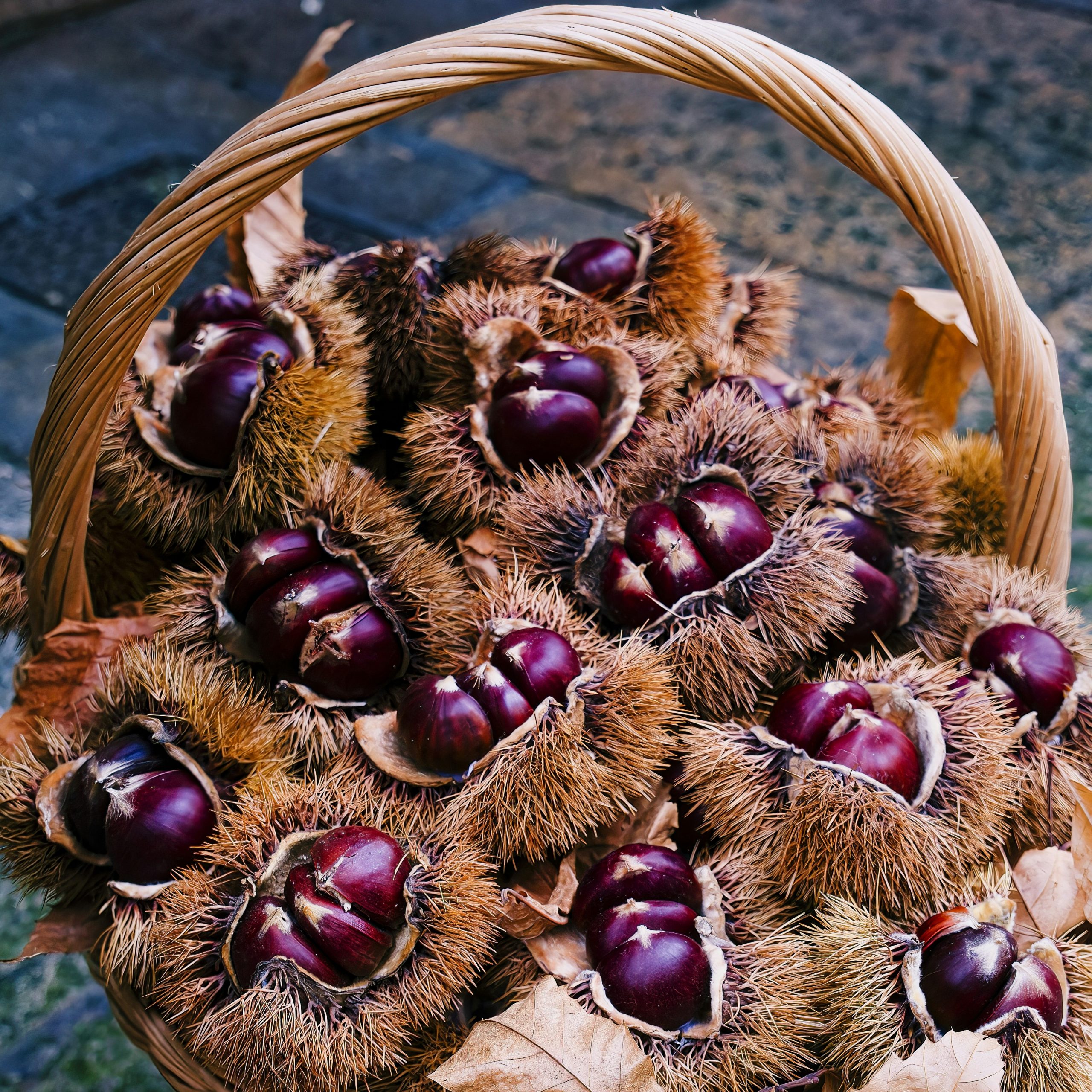
Fall: Harvest and the Gift of Chestnuts
Autumn is Tuscany’s season of abundance, when the countryside glows with grapevines heavy with fruit and olive groves ready for picking. September brings the vendemmia, the grape harvest, celebrated with festivals like Vino al Vino in Panzano, where Chianti winemakers pour their latest vintages to the sound of music in hilltop squares. At the same time, the olive harvest begins, yielding fresh, peppery olio nuovo, sold directly from the mills in dark green bottles.
But autumn’s true symbol is the chestnut. In the Garfagnana mountains, chestnut trees once sustained entire communities, their flour transformed into breads, porridges and pasta. A local proverb states, “If you didn’t have chestnuts, you would starve!” Today, the tradition lives on in dishes like testaroli, an ancient pasta cooked over embers, or gnocchi crafted from chestnut flour and potatoes, often paired with butter and sage, a herb sacred to the Romans. Chestnuts appear in soups, risottos, stuffings and desserts, from gelato to Mont Blanc, a chestnut purée crowned with whipped cream.
Autumn also brings mushrooms and truffles. Foragers scour woodlands for porcini, their meaty flavor prized in risottos and sauces. In the hills near San Miniato, white truffles emerge in October and November, their intoxicating aroma fetching astronomical prices and celebrated in dedicated festivals. To taste Tuscany in autumn is to share in its history—gathering, celebrating and feasting on the flavors that have sustained generations.

Winter: Comfort in the Cold
When the nights grow long, Tuscan kitchens turn inward, toward warmth and nourishment. Hearty soups dominate the table, including ribollita, a rich blend of beans, kale, vegetables and bread, pappa al pomodoro, made with bread and tomatoes, and minestra di farro—a legacy of the Etruscans—combining the ancient grain with beans, carrots and onions.
Peasant traditions live on in dishes like fagioli al fiasco, beans slow-cooked in Chianti bottles set near dying embers, a resourceful way to use residual heat. Today, trattorias still honor this custom, serving beans infused with herbs in homage to a centuries-old practice. The Slow Food movement has worked to revive heritage ingredients like the Fagiolo Rosso di Lucca, once nearly extinct, ensuring that traditional flavors endure.
Winter also ushers in sweet holiday specialties. Siena’s panforte, dense with honey, spices, nuts and candied fruit, recalls medieval honey cakes once made for pilgrims. Panettone, golden with egg yolks and dotted with candied fruit, remains a fixture of Tuscan Christmas tables. To share Tuscany’s winter table is to savor resilience, resourcefulness and the timeless joy of gathering around food.
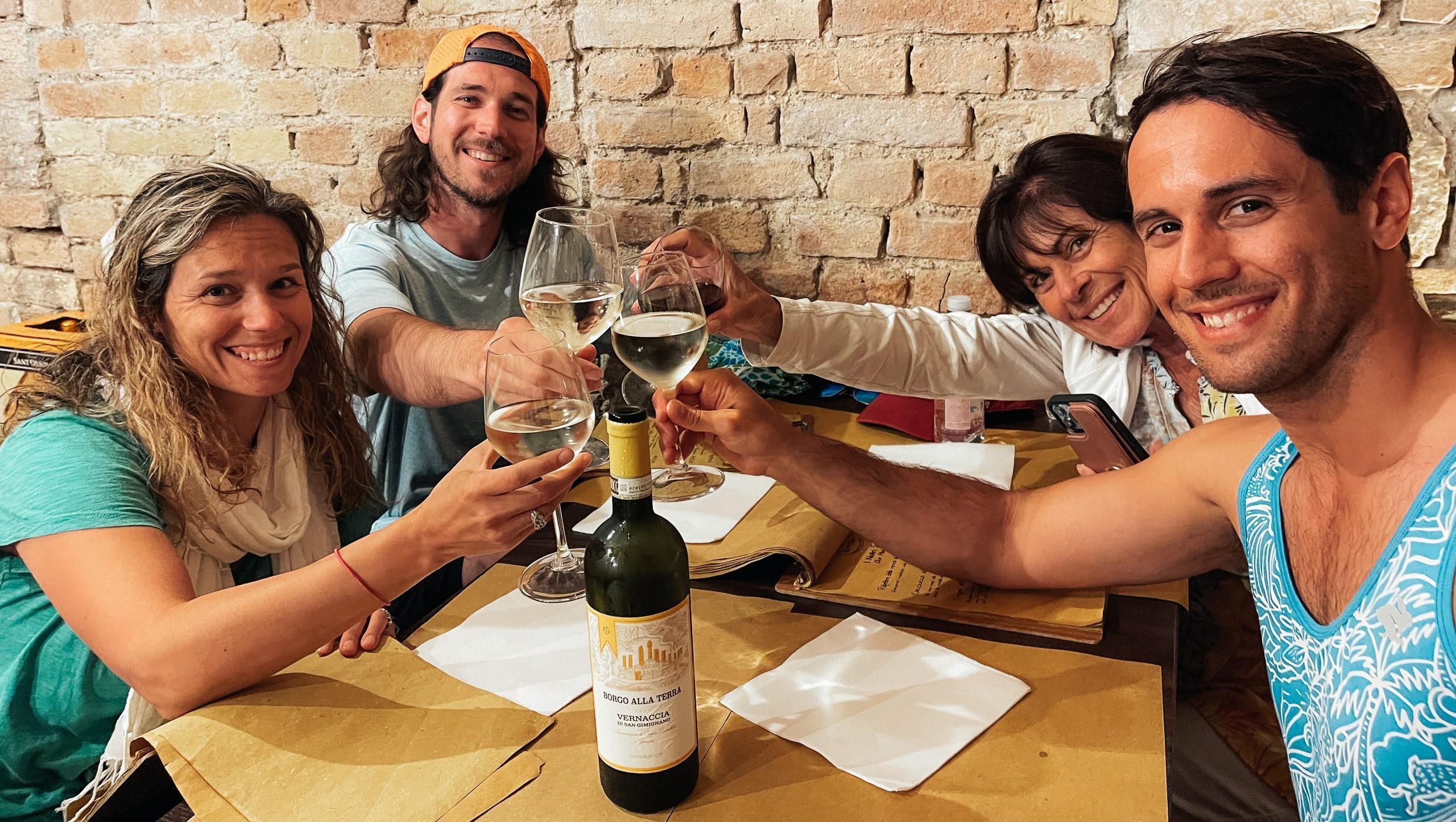
My family sampling Vernaccia di San Gimignano, the region’s most notable white wine, at La Bottega in Tuscany, before being brought hearty bowls of ribollita.
A Note on Wine: Tuscany’s Timeless Vintage
Wine has been the lifeblood of Tuscany since the days of the Etruscans. The ancient Via Chiantigiana winds through forested hills, linking towns with medieval castles, stone farmhouses and family-owned estates. Today, Tuscany’s wines reflect both tradition and terroir: robust Chianti Classico, the noble Brunello di Montalcino and crisp whites like Vernaccia di San Gimignano.
In Montalcino, vineyards still cultivate the Sangiovese Grosso grape, yielding Brunello, one of Italy’s most esteemed reds. Tasting it in cellars that have changed little since the 16th century is to sip history itself. Further east rises Montepulciano, renowned for its Vino Nobile. On our Tuscany: La Dolce Vita journey, descend into the De’ Ricci wine cellar, a vast labyrinth beneath the Ricci Palace known as the “Cathedral of Vino.” Dating to 1337, it remains one of the most beautiful cellars in the world, and its vaulted chambers still echo with centuries of winemaking tradition. A private tasting of Vino Nobile brings the experience full circle, linking past and present in every glass.
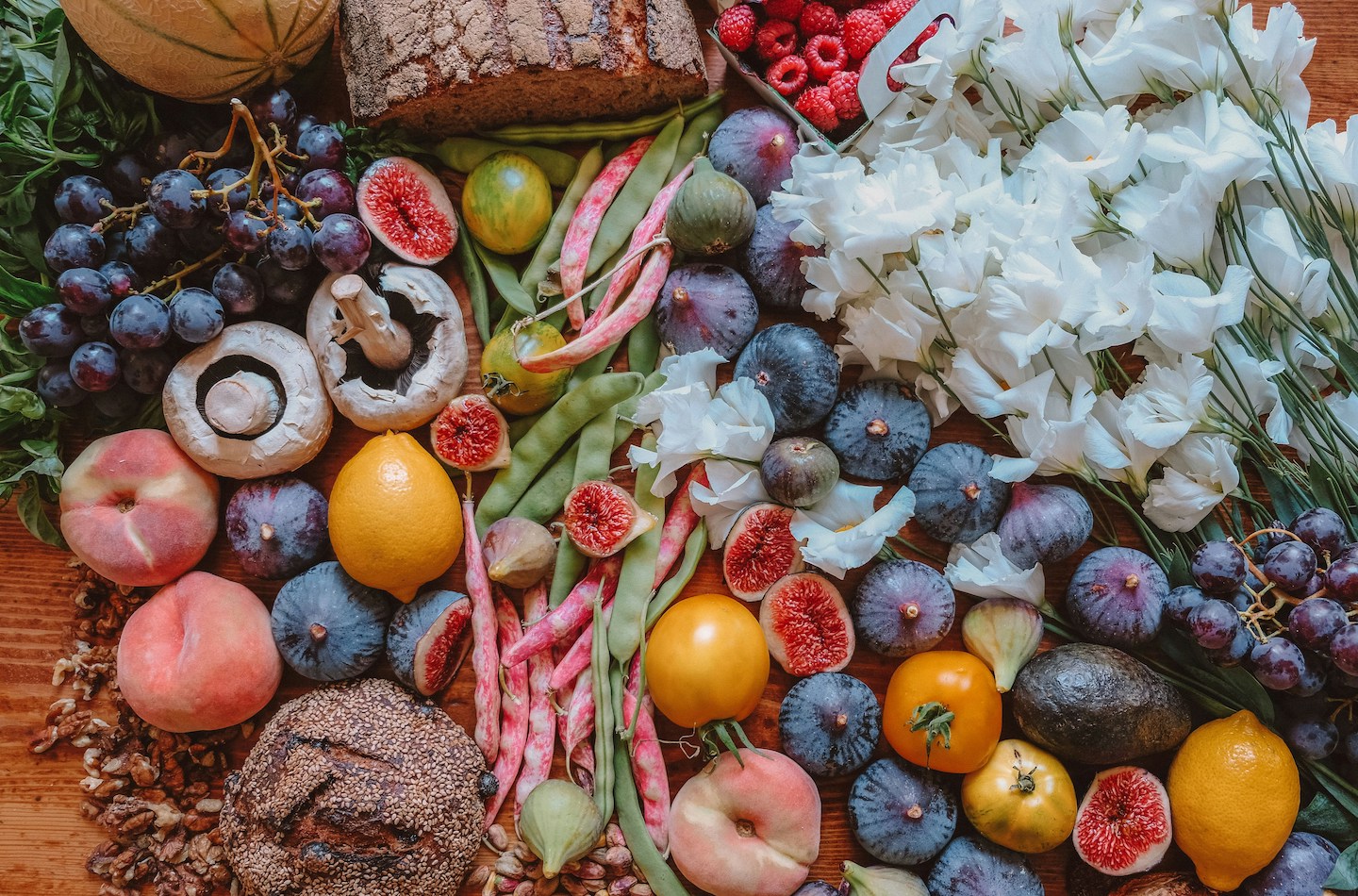
Living the Tuscan Way
In Tuscany, each season offers its gifts: spring’s tender greens, summer’s sun-ripened tomatoes, autumn’s chestnuts and mushrooms, winter’s soups and sweets. Each sagra, each dish, each glass of wine reflects centuries of continuity, ingenuity and joy.
On our Tuscany: La Dolce Vita adventure, you’ll savor these traditions firsthand:
- Enjoy fresh local fare prepared by a private chef, with hands-on culinary classes led by renowned gourmands
- Tour acclaimed small wineries for private tastings
- Meet artisan producers of cheese, pasta, honey and olive oil
Come hungry—not just for food, but for a way of life. In Tuscany, every season is a feast.






